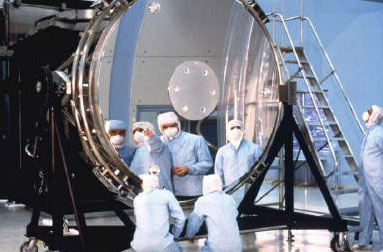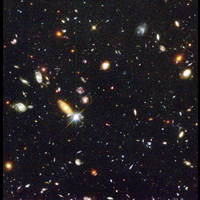The Hubble Space Telescope uses a (relatively) simple optical system to generate some of the most spectacular astronomical images I know of. On the right is my all time favorite - the Hubble Deep-Field image. Iit's looking off into what you might think of as fairly ordinary, dark, mostly empty space. What's remarkable about this picture (here's a zoomable image) is that everything you see in it, each bright spot (with ONE exception) is not a star, it's an entire galaxy. Think about that for a minute, I find it simultaneously humbling and inspiring! _________________________________________________________________
-
EXTRA CREDIT SURVEY: Please fill out this survey
It counts as extra credit for you, is informative for this course - and I think you will find it useful to think about these questions! - Exam 3 grades are now available on D2L. (The historgram is available on our "exams and grades" link)
- CAPA #14: Due Wed Dec 5, night
- (Last!) Written HW, Due Fri Dec 7
- If your iClicker # is 1E96C840, please contact Prof. Pollock
- If you find any broken links or issues with the website, just email me. Thanks!
- There is a weekly optional study session
run by Ariel Paul, every Tues at 8 PM, in G125 (1 floor up from our class).
- For a nice physical explanation of Snell's law, check out this sim. (Watch it, then hit "next step". There are four steps to watch.
- Here is the extra lens sim I showed in class Monday. (Click on the "+" sign to switch it to "-" for a diverging lens, which the phet sim does not have)
___________________________________________________________
Earlier homepage and announcements can be found here: week #1, week #2/3 , week 4 , weeks 5/6, week 7, week 8, week 9, week 10, week 11,

